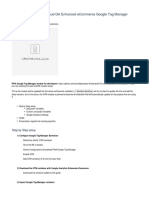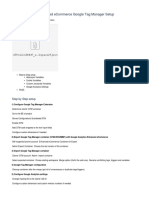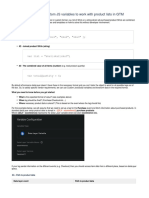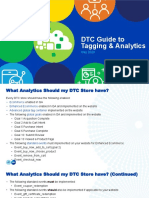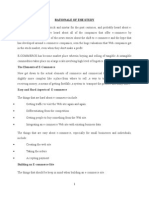0% found this document useful (0 votes)
40 views5 pagesHow Data Layer Integration Works, ppt1
The document explains how to implement a data layer in a website using JavaScript, specifically through the window.dataLayer object, which stores tracking data for Google Tag Manager. It details the process of pushing product data to the data layer during a product view event on e-commerce sites. Additionally, it outlines a typical customer support flow in e-commerce, highlighting the use of AI for initial queries and the role of support agents in resolving complex issues.
Uploaded by
katwilson2479Copyright
© © All Rights Reserved
We take content rights seriously. If you suspect this is your content, claim it here.
Available Formats
Download as PDF, TXT or read online on Scribd
0% found this document useful (0 votes)
40 views5 pagesHow Data Layer Integration Works, ppt1
The document explains how to implement a data layer in a website using JavaScript, specifically through the window.dataLayer object, which stores tracking data for Google Tag Manager. It details the process of pushing product data to the data layer during a product view event on e-commerce sites. Additionally, it outlines a typical customer support flow in e-commerce, highlighting the use of AI for initial queries and the role of support agents in resolving complex issues.
Uploaded by
katwilson2479Copyright
© © All Rights Reserved
We take content rights seriously. If you suspect this is your content, claim it here.
Available Formats
Download as PDF, TXT or read online on Scribd
/ 5









